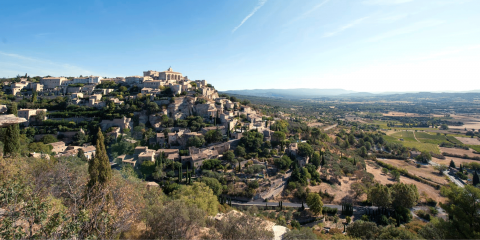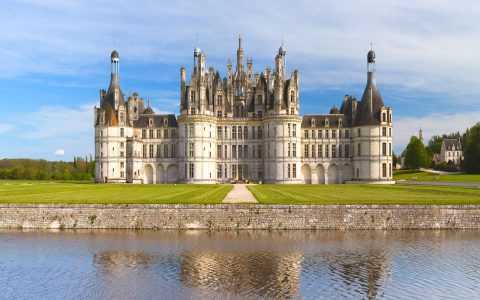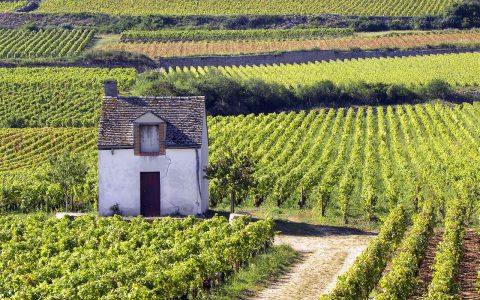Vines 101:
Champagne
While expanding your palate is a worthwhile endeavour in its own right, it’s made all the more rewarding when you have a sense of the history behind the bottle. In our Vines 101 series, we pull back the curtain on some of our favourite wine regions in the world and explore their oenological origins. When it comes to Champagne, let’s start with that most basic of questions…
What makes Champagne Champagne?
 According to the Champagne AOC, in order for a wine to bear that famous name, it must be made from grapes that come from the 25,000 hectares of designated vineyards in the region of Champagne—the addition of grapes grown in any other part of the world would disqualify the wine from bearing the name Champagne!
According to the Champagne AOC, in order for a wine to bear that famous name, it must be made from grapes that come from the 25,000 hectares of designated vineyards in the region of Champagne—the addition of grapes grown in any other part of the world would disqualify the wine from bearing the name Champagne!
The wine must be made from any combination or percentage of the three specified varieties of grapes in the region: Pinot Noir, Pinot Meunier and Chardonnay. The addition of Sauvignon Blanc, for example, would prohibit the wine from being sold as Champagne.
And, of course, in order to qualify as Champagne, wine must be made using the Methode Champenoise.
Champagne Production
Most of the vineyards in Champagne are owned by farmers, or tiny producers. The vast majority of the production of Champagne is carried out by the Grand Maisons, the names we all know: Moët et Chandon, Laurent Perrier, Veuve Cliquot, Mercier, etc.
 These Grand Maisons buy most of the grapes that they need for producing their wines (e.g. Moët, with annual sales of 22.9 million bottles, buys 75 percent of their grapes; Lanson, with annual sales of 6.4 million bottles, buys 100 percent of their grapes). Long-term growing contracts and vineyard leasing arrangements exist, which leads to a great demand for grapes, a proclivity for backroom deals and certainly the need for a very competent regulatory body.
These Grand Maisons buy most of the grapes that they need for producing their wines (e.g. Moët, with annual sales of 22.9 million bottles, buys 75 percent of their grapes; Lanson, with annual sales of 6.4 million bottles, buys 100 percent of their grapes). Long-term growing contracts and vineyard leasing arrangements exist, which leads to a great demand for grapes, a proclivity for backroom deals and certainly the need for a very competent regulatory body.
Enter the Comité Interprofessionnel du Vin de Champagne (C.I.V.C). The C.I.V.C. is the regulatory body that presides over the wines of Champagne. Each year the C.I.V.C. sets a certain price, which will be the official selling price for a kilogram of grapes. This cuts out the possibility of total monopoly by the Grand Maisons, who could otherwise negotiate better bulk prices, leaving the small guys with the dregs at the end of the basket.
Famous Names of Champagne
The Côtes des Blancs
Every one of the Tête de Cuvées (e.g. Dom Pérignon, Cristal, Signature, Grande Dame) hails from this region, which exclusively plants Chardonnay grapes. The two principal towns are Avize and Cramant, with Le Mesnil sur Oger and Cuis rounding out the slope.
L’Abbaye d’Hautvillers
This is the abbey where the famous Dom Pérignon (1638–1715) himself lived and worked; it was here that he perfected the methods now used to make Champagne. These techniques include the riddling process, which brings the sediment out of the bottle (giving us that clear, brilliant colour), doing away with oil-soaked clothes and introducing corks to seal the bottles. Dom Pérignon was the first to see the benefits of the all-important blending process. It was said that his sense of smell and taste were so highly developed, he could taste the grapes coming in and tell which vineyard they came from!

Anselme Selosse
He’s known, of course, in Champagne, but he’s gained notoriety outside of his domain as a pioneer, both for the different techniques he uses and the philosophy he practices. He was, to give just one example, the first to use oak barrels to magnify his wines. But first and foremost, he’s known as the first to think terroir in a region that wasn’t too sensitive to it. Of course, the notion of Grand Crus and so on exists here, but no one before him went as far in the concept. An example? Out of six small parcels he created a unique collection of wines, each named and vinified differently.
Leave a Reply
MORE FROM France + Champagne

Grape Harvesting in Ventoux
France
The Top 5 Hiking Routes in Provence and Cote d’Azur
Provence
With Vineyards, Beaches, and Quaint Villages, Île de Ré Is France’s Best-kept Secret
France
Photo Diary: A Sunday in Provence with B&R Guide Tatjana Buisson
Provence
5 Ways to Relive the Renaissance in the Loire Valley
Loire Valley
The Best Luxury Hotels in Paris: From Classic to Contemporary
France
Secrets of the Seine
Île-de-France
6 Reasons Why You Need to Visit Normandy, France
Normandy
10 Best Markets & Shops in Provence
Provence
Bordeaux Nouveau: France’s Coolest City Right Now
Bordeaux
Falling Head Over Heels for Burgundy
Burgundy
The World’s Best: Top 15 Bordeaux Wines
Bordeaux
Rediscovering A Classic: Burgundy
Burgundy
Reading for the Road: Our 5 Favourite Books About Bordeaux
Bordeaux
The Pleasures of Southwestern France
Bordeaux
Normandy’s Showstopper: Mont Saint-Michel
Normandy
Reading for the Road: Our Favourite Books About Normandy
Normandy
Abbaye de la Bussière: English Hospitality in the Heart of France
Burgundy
Secrets of the Loire Lifestyle
Loire Valley



Let us know what this is all about! I love Champagne.
Will do Kathryn, we’ll be in touch!
Not to be too pernickety but some of this is a little out of date. CIVC no longer sets the price for grapes; EU anti price fixing rules saw an end to that. CIVC does set the quantity (tonnage) of grapes that may be made into champagne each year; at least for the present. The total area in Champagne’s production area is 33,573 ha or 82,960 Acres see: http://www.champagne.fr/en/champagne-economy/key-market-statistics
Thanks Pearse! Very helpful link. As you can imagine, it can be difficult to keep hundreds of blog posts from all corners of the globe up to date, so the update is much obliged!